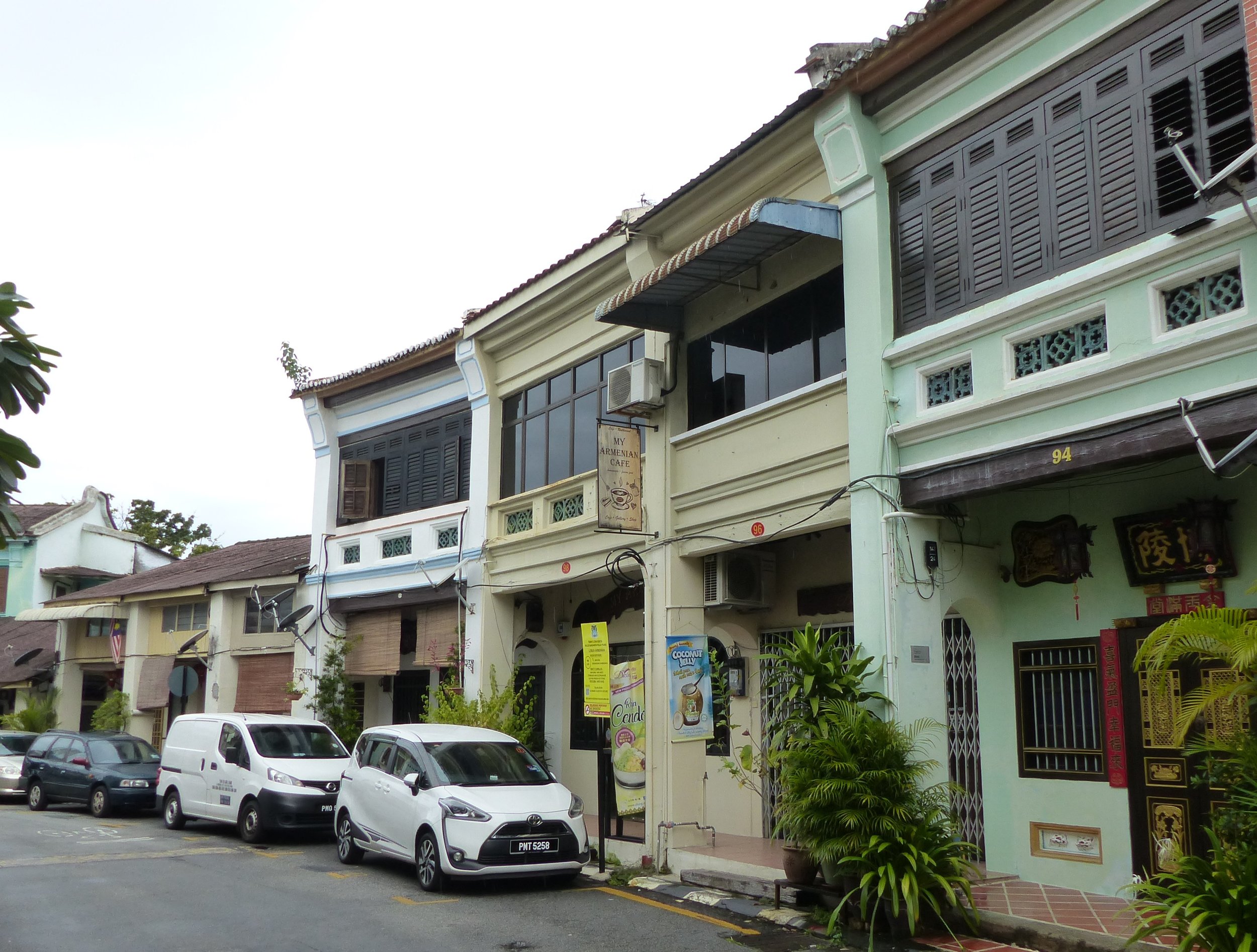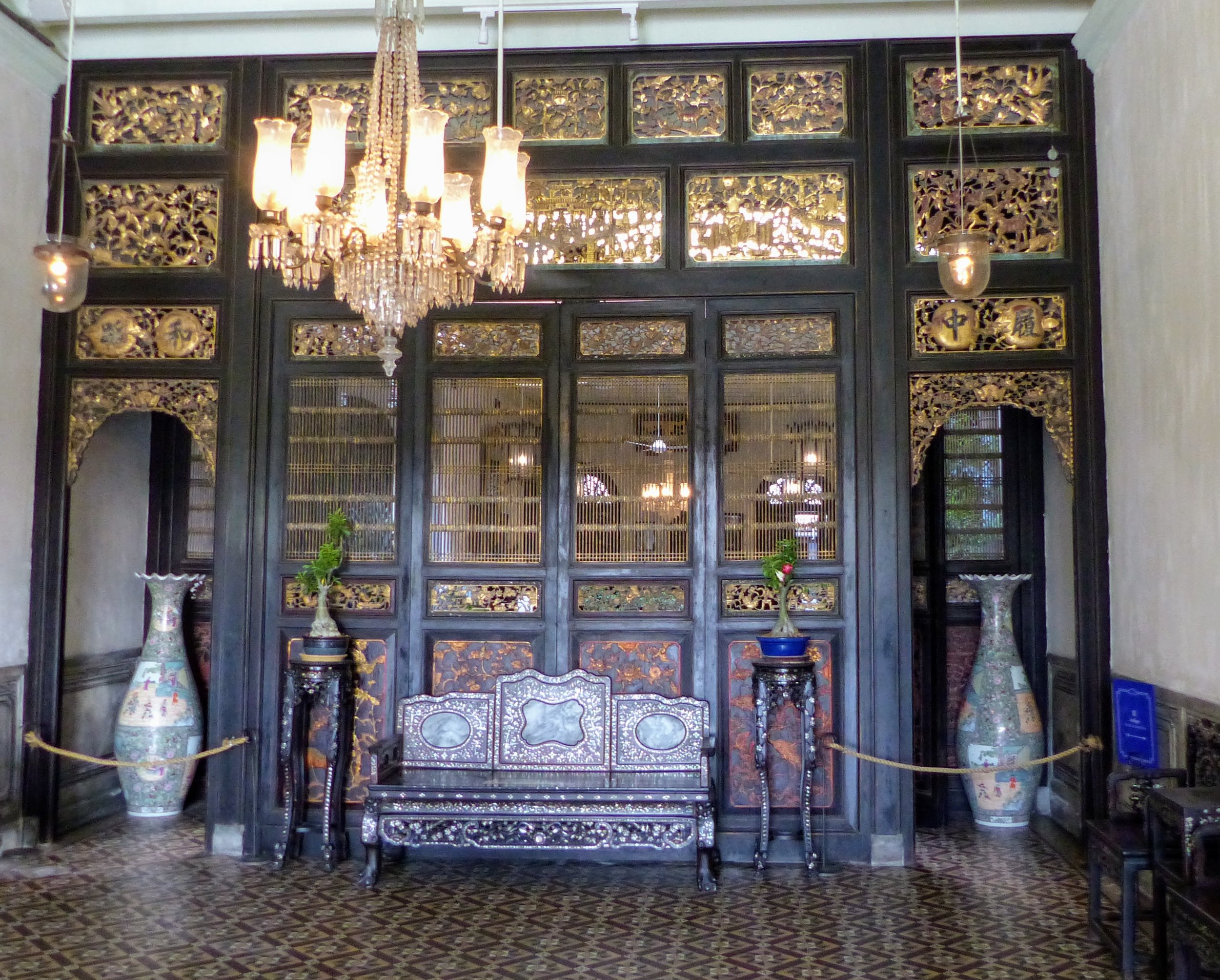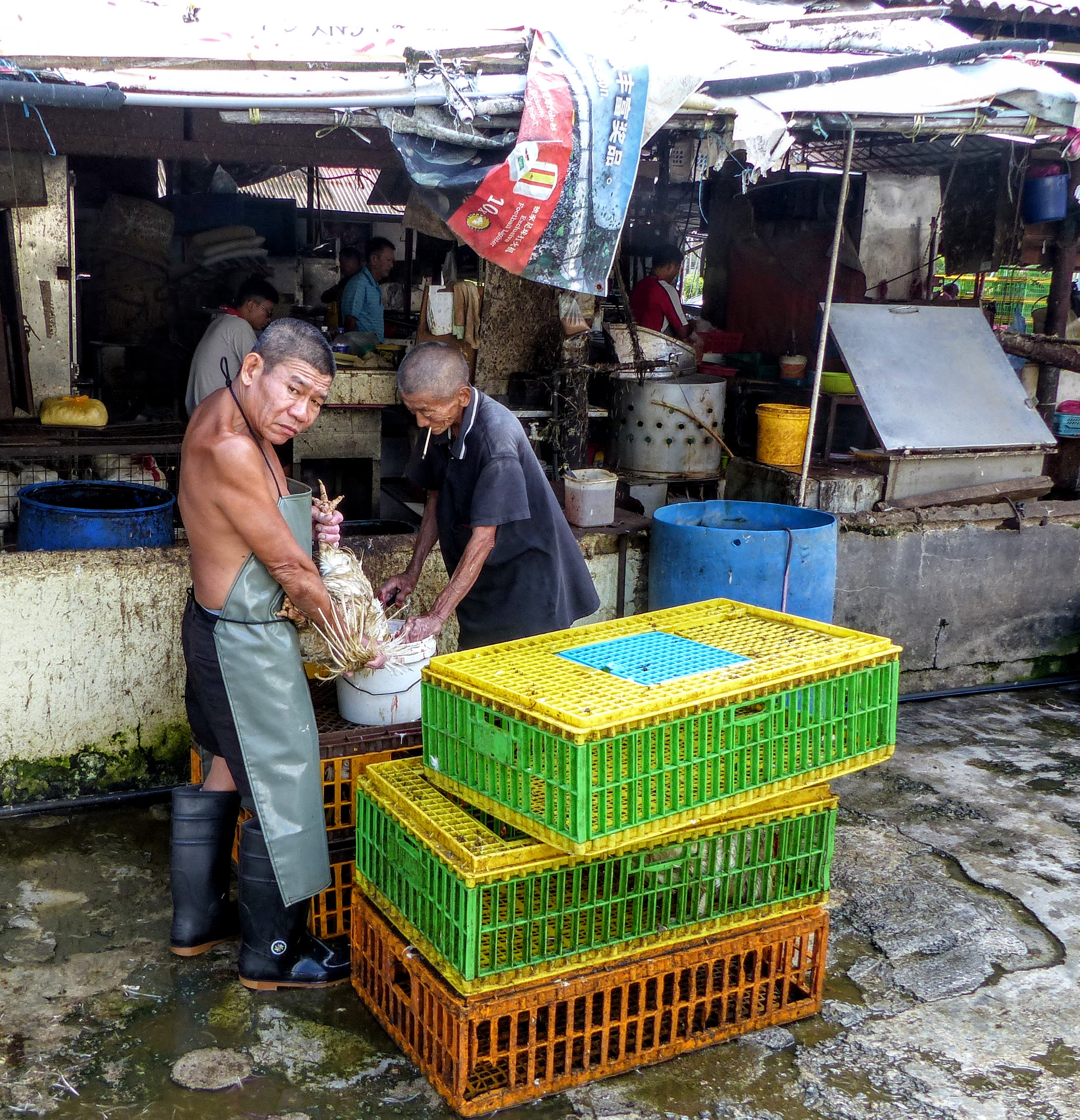George Town, Penang, Malaysia
To re-validate our visas we have to leave/return Thailand every 60 days, so we just returned from the second border run. This time we went to George Town, a UNESCO World Heritage Site since 2008, on the island of Penang in Malaysia. I would like to say we chose George Town to learn about its history, study the eclectic architectures and immerse ourselves in the multiple cultures of Malaysia - sophisticated reasons. But the honest truth is (and I am not ashamed to admit it) we went there because we’re food-crazed. We intended to eat our way across this culinary mecca. We did just that, and along the way we visited churches, temples, mosques, triad clan houses, and historic mansions. As a bonus, we saw some of the world’s best street art.
What made George Town such a melting pot? Trade. Founded in 1789 by the British (and named after King George III) as their entrepot for SE Asia, propelled by its spice production, threatened by Burma, supported by the Sultan of a Siamese vassal state, visited often by Dutch traders, and built by Chinese and Indian labor, George Town is truly fascinating in its multi-ethic/cultural/religious/culinary splendors. We stayed in a family-owned 12-room historic hotel and excitedly ventured out each morning.
Although the UNESCO George Town is small enough to easily explore on foot, we needed 3 maps: living heritage sites, foodie delights, and street art.
This mural by Ernest Zacharevic, a Lithuanian artist, is so poplar that tourists queue up to sit on the real bicycle and have their pictures taken. The artist was commissioned by the city to paint/construct 6 murals for the George Town Festival in 2012, all depicting scenes of every day Malaysian life. The murals were so well-received that other muralists and street artists placed their creations around the city. The weather-worn stucco surfaces of the building make for an interesting canvas.
In the center of the city’s Tamal neighborhood is the Kapitan Keling Mosque established in 1801 by Indian Muslim traders called chulias. Nearby is Pitt Street which the locals call the “Street of Harmony” because Muslim, Taoist, Hindu, and Christian places exist together. And Penangites call the same street in tourist jargon, Malay, English, colonial names, and official designations, e.g., Pitt Street is also Jalan Masjid Kapitan Keling! Thankfully, when we got lost, we just stopped at a food cart to drink teh tarik (“pulled tea”) or yeen mai soi or leong fun.
In the evenings, many already busy streets, become more energized with street hawkers, each one selling their specialty dish. You might grab a plate of mee goreng (fried noodles) at one stall, and a bowl of Penang Assam Laksa (a complex multi-flavored vermicelli dish), then stop in the dessert shop for bahulu (sponge cake). The auto and motor bike traffic never stops; it just slows for a moment as people go back and forth from stall to stall.
As we explored Little India, we walked into this wedding celebration in the 300 years old Arulmigu Sri Mahamariamman Temple, Malaysia’s oldest Hindu temple. It strengthened the community of Indian merchants, laborers, former convicts, sepoys, stevedores and their families. The 24 ft tall tower (gopuram) has statues of Hindu gods and goddesses, their many reincarnations, animals, and floral decorations. Lord Ganesha and his brother Lord Muruga stand in the pillars. On another day, we went inside and saw devotees making offerings to (among other deities) the primary deity Goddess Mahamariammam, mother of Lords Ganesha and Muruga, reincarnation of Parvati, wife of Hindu god Shiva. Powerful stuff!
This was my favorite meal of the week. We sat at a table, and one waiter gave us each a banana leaf. Another came by and scooped out rice from a large pot. Then another came by and ladled out vegetables, followed by another with a tray of meats (lamb, chicken, or fish). They left a caddy of different dahl sauces on the table. Locals eat with their fingers, but thankfully, we were given forks and spoons. The food was so good, I wanted to lick my banana leaf when I finished.
This man is making teh tarik, a strong brew of black tea blended with condensed milk. The story behind the “pulled tea” is that the Tamal Indian Muslim rubber tree workers were given tea breaks during the day, but the breaks were never long enough for the tea to cool so the vendors began pouring the mixture from cup to cup, quickly repeating the process 7 times, and each time the distance between the cups grew. When the tea is served there is a little foam on the surface, and the temperature is perfect to start drinking!
This is a wonderful mural called “Indian Boatman” painted in 10 days by a 26 year-old Russian artist named Julia Volchkova.
This is Choo Chay Keong, the clan temple of the Lum Yeong Tong Yap Kongsi. Chinese clans (aka the secret societies) grew from the natural desire of families emigrating from China to congregate, worship common ancestors in their own temples, and form strong community and commercial bonds. Clans (kongsi) built their own ornate clan houses. Inevitably power struggles ensued. During the Penang Secret Societies Riot in 1867 the Hokkien Chinese attacked the Cantonese Chinese who aligned with the Malays and Indians. For escape and surprise, a secret passageway connects Cheah Kongsi and Khoo Kongsi houses.
After considerable research, George created a document detailing (rank-ordered by uniqueness) Malaysian food items, best hawker stands, and street corners for us. Is anybody surprised? But it was great so away we went! Mee Goreng, koay assam laksa, koay teow th’ng, hokkien mee, char koay teow, curry mee, fried oyster omelet, wan tan mee, and more!
The Boy on a Chair is another mural by Ernest Zacharevic. It’s tucked away in a corner near Cannon Square, and we almost missed it. On the left is the minaret of the Acheen Street Mosque, founded in 1808 by a wealthy Arab trader from Acheh. The locals call it Masjid Melaya, and it is located in the oldest Malay kampung (village) in George Town. The mosque is noteworthy for the Egyptian style (not Moorish) minaret built in 1808 which has a hole from a cannon ball fired during the clashes for power in 1867 among the Chinese triads (hence Cannon Square).
Buildings (many times renovated) on Armenian Street illustrate the “5-foot ways” covered walkways for shop houses. In 1822 Sir Stamford Raffles ordered the style in Singapore, with narrow 5’ fronts (taxed) and deep rears (for living quarters). Increasing prosperity allowed shop owners to have 3 or 4 stories. We see this shop house style all over SE Asia. Armenian Street was originally Malay Lane but renamed in 1808 with the influx of Armenians (who left in 1837). The Chinese took over. Sun Yat-Sen (China’s “George Washington”) started the revolution against the Chinese Qing dynasty from a shop house on this street. (note: we’re going next to Taipei so more about Sun Yat-Sen later).
We wanted to try some cendol, a lightly sweetened dish made with green jelly noodles, kidney beans, shaved ice, coconut milk and palm sugar. We asked where to find the best vendor, and we were directed to walk down the street, turn left, then walk until we saw a long line of people. That was it! The vendor sets up his stall around 4 pm under the mural and sells out within a few hours. No tables or chairs; people eat standing up in the street, dodging vehicles coming through.
There are about a dozen murals of cats, some large, some very small, throughout the city. Some have an obvious message, and others are simply whimsical. And of course the ubiquitous Chinese tourist!
This is the entry hall of the Cheong Fatt Tze Mansion (aka the Blue Mansion because the outside is painted in expensive indigo blue), built by a wealthy merchant at the end of the 19th century. It is now a hotel and restaurant with just a few rooms open to tourists. The mansion has been used for movie sets, most recently as the set for the pivotal scene of ma jong in “Crazy Rich Asians”.
This iron work sculpture is one of 52 sculptures called Marking George Town, a street art exhibition commissioned by the Penang State Government in 2009 to celebrate the recent (2008) status as a UNESCO World Heritage Site. The government held a worldwide competition which was won my a Malaysian sculpture studio SCULPTUREATWORK. Made locally, each one gives a little history of the street with a bit of whimsy. This one titled Rope Style is located on Jalan Pintal Tali where traditional spinners used coconut husk fibers to make ropes for bullock carts and ship mooring during the 1800’s.
This sweet man made me a tasty bowl of hokkien mee, a noodle based dish steeped in an aromatic stock made from pork bones and prawn heads. His cart banner declared that he recently won a Penang competition. He gave me blue chop sticks and soup spoon (blue is assigned to his cart by the street dish washers) for eating next to his cart, and he ties up take-away bags with the bright pink plastic strings by his head.
King Fu Girl (aka Little Girl in Blue) by Ernest Zacharevic.
George Town is the center of Peranakan culture. Chinese traders to Malaysia (particularly in the early 1800’s) who married local Malay brides created a unique intermingling of the two cultures. Moreover the British (who favored George Town) encouraged wealthy merchants from Malacca (southern Malaysia) to relocate to George Town. Their children (and Chinese men had several wives) became known as Pernakan (derived from Malay anak "child" and means "descendant") and called themselves Baba Nyonya - Baba is an honorific for the men and Nyonya is an honorific for a foreign married lady (interestingly based on an old Portuguese word). Often wealthy and well-educated & connected, the Baba-Nyonya strongly influenced Malaysian culture, built beautiful mansions, created fusion fashion, and invented new cuisine.
This montage of pictures is from the Pinang Peranakan Mansion. The ornate bed is for the wedding night: the groom would view the bride’s face for the first time on their wedding night. The woven basket in front of the wedding bed contained 2 chickens: the next morning, if the larger chicken jumped out first, then the child would be a boy. The large dining table is for the many children (good fortune).
These three Muslim girls are touring the city on their rental bicycles. We saw so many variations on “the veil”, from a loose scarf to complete coverings. Many, many women were out and about, shopping and eating on their own, veiled and unveiled.
George Town is a modern city within an old city of traditions, stories, cultures, and perspectives. We set out to explore, experience, and extend ourselves, and we did!



















